Hi, everyone!
On Wednesday, Grandma got me up early to see sunrise from our hotel balcony. It was Grandpa’s birthday, and he got a special treat at breakfast!
Livio-san told us that Opatija is a new town, started in the late 1800s as a place where rich people could come to breathe healthy air and get healthy exercise. Opatija is as far north as Ottawa, but the climate is much warmer because of the Adriatic sea. Many famous people have visited here, and there are beautiful gardens and houses!
Franz Joseph, who was emperor of the Austro-Hungarian empire in the 1890s, enjoyed visits to Opatija. He built a path all along the coast so visitors could walk for their health. Livio-san took us walking from our hotel along the path to three other nearby bays! It was another hot day, so we didn’t walk to the very end of the path. That would have been five miles! There were steps down to rocks and beaches all along the path.
At the end of our walk, our bus driver Marco-san picked us up and drove up into the mountains. We visited the little town of Moscenice. This is another medieval walled town, 753 steps above the sea. There’s a contest here every year to see who can fly a paper airplane farthest from the city wall! We got a bus ride to the town square, but there were still lots of steps to climb to get to our restaurant for lunch! We ate on a porch high up over the sea! The restaurant has its own vegetable garden, so all the salads are very fresh! After lunch, we went to the cultural museum. I recognized the olive mill right away!
When we were done in Moscenice, we went back down the mountain to the beach! The beach was pebbles, just like the one at Milna. Grandma went for a swim in the Adriatic and said it was very refreshing. I decided to stay on the beach and watch people on the floating playground! Then we went back to Opatija for another birthday treat for Grandpa. Everybody went to a cold stone ice cream store, where you can order ingredients mixed into vanilla or chocolate ice cream. The chocolate and sour cherries with vanilla ice cream was yummy!
On Thursday, we got in the bus for another adventure! First we stopped to look at the mountain town of Motovun. The famous race driver Mario Andretti was born there! Livio-san told us that before World War I, the Istrian peninsula was part of the Austro-Hungarian empire and the official language was German. Between World War I and World War II, Istria became part of Italy and Italian was the official language. When Istria became part of Yugoslavia after World War II, a lot of Istrians who thought of themselves as Italians left and went to live in the United States. Even though the hilltop villages in Istria look like ones in Dalmatia, there’s one big difference: fewer rocks! Istria has red, mineral-rich soil that can actually be plowed!
The forest around Motovun is one of the places white truffles grow wild. Truffles are sort of like mushrooms with rich flavor, but they grow underground in oak forests. We visited a truffle hunter to see how he and his dogs find truffles! Nikola-san told us how he trains his dogs to smell truffles and start to dig them up. Then he gave us two truffles to bury, so his dogs could show how they work. They found both the truffles! Even though the dogs like the smell and taste of truffles, they traded them to Nikola-san for a treat instead of eating them.
We had one more stop on our Thursday adventure! We went back to the coast to Porec, another very old walled city. Along the harbor, there’s something really new: a park bench with solar panels that provide power to charge cell phones! The most famous part of the old walled city is the Euphrasian basilica. A basilica is a Roman Catholic church that a Pope has decided is of special importance. This basilica was built in the 500s A.D. on the site of another church that was 200 years older. The mosaics from the floor of the earlier church have been preserved.
After we left Porec, we went further south on the coast to Rovinj, another old walled town on the coast. We stayed at a hotel that was designed to look like a cruise ship! I visited the falcon who keeps pigeons away from the hotel, but I’m not sure I made friends!
The old city of Rovinj was originally on an island, with walls all the way around. Now the gap between the island and the shore is filled in. There are lots of new hotels just beyond the harbor! In the old city, there are paving stones on the ground and lots of steps up and down! Grandma let me stay up for dinner and gelato afterwards, so I got to see the pretty sunset!
On Friday, we drove even further south down the Istrian peninsula to Fazana to take a ferry to Brijuni national park. On the way, we stopped at a cultural center to see kazun, the stone shelters farmers built in their fields. The kazun gave workers in the fields a shady, cooler place to rest during their work day, but nobody lived in them. They were often built right into the stone walls separating fields!
There were lots of people taking the ferry to the Brijuni island national park! During the Roman era, the islands were places where important politicians built villas to get away from the city. When Tito founded Yugoslavia after World War II, he visited the islands and decided they would be a good place for his personal retreat and for entertaining important visitors. After he died, most of the islands became a national park, although there are still three government owned villas.
Livio-san took us for a walk on the end of the island that has Roman ruins, but not crowds . We had a very peaceful walk! We saw parts of the Roman water collection system, and Roman baths, and the remains of a temple to Venus!
Livio-san found some bits of mosaics among the rubble around the Venus temple. Then we visited the Roman senator’s villa. It was very big! On the marshy end of the island, we saw the remains of a village where salt was made from sea water. Livio-san said it was abandoned because the marsh mosquitoes carried malaria!
In mid-afternoon, we took the ferry back to Fazana and drove to Vodnjan. There we visited the Chiavalon olive oil company. Georgia-san taught us how to tell real extra virgin olive oil from fake products by smell and taste! One of their olive trees is over 350 years old and still produces olives!
Before we went back to Rovinj, we had one more stop. Pula is the biggest city in Istria and isn’t far from Fazana and Vodnjan. There’s a big Roman amphitheater there that is still used for concerts today! The walls are very impressive! We took a look at the museum which had Roman artifacts. Amphora were used to store liquids, like olive oil and wine.
Grandma took me out into the arena, but I didn’t like being there! During the Roman times, people were killed there by hungry lions as punishment for their crimes. Lots of other people came to watch! There were fights between gladiators, too, where the fighters got hurt and sometimes died. None of that was good for people OR lions! The music concerts that are held here now are a much better use! The afternoon was hot, so I was happy to sit down with my resting buddies Jean-san and Garry-san before we climbed down from the seating area!
Saturday morning was the last day of our tour! There was a pretty semi-sunset Friday evening and a pretty sunrise Saturday morning. We had to get up extra early to make the long drive to Zagreb, the capital of Croatia.
Our first stop in Zagreb was at the cemetery, which is very ornate and lovely. Then we drove around the newer parts of town to see some of the buildings. The famous Orient Express train stopped at Zagreb’s railroad station! The old town was built on two hills, one for the church and one for the civil authorities. That area is closed to car traffic, so we walked around.
We were right in the square in front of the Cathedral on Kaptol (the lower hill) at noon when the ceremonial changing of the guard at the town hall happens. The soldiers all wore neck scarves. The necktie, or cravat, was invented in Croatia. When Croatian soldiers were sent to serve in France during the 1600s, their wives or girl friends tied scarves around their necks with special knots. The custom of wearing a tie caught on with the French! After the changing of the guard, the officers rode through the market, too.
We walked around a little more and had lunch in a little restaurant that was so steep that the tables had to be on risers! Then we walked around in the upper city. We saw St. Mark’s church with its colorful roof. During the Yugoslavian era, St. Mark’s roof was one of the few places the Croatian coat of arms could be displayed! I had a rest with a poet before we took the path and steps back to the part of the city where we could meet the bus.
Then our tour was over! I made sure to thank Marco-san, our bus driver, and Livio-san, our guide. Then I said goodbye to my resting buddies, Jean-san and Garry-san. Grandma and Grandpa and I took a taxi to a hotel near the airport to spend the night.
On Sunday morning, Grandma and Grandpa and I got on a plane for a direct flight back to Toronto! Grandpa was able to track the flight path on his iPad, so I knew what I was seeing when I looked out the window. Mostly it was clouds, but they cleared over Iceland and Greenland! I recognized Snaefells mountain from our stay in Budir!
As we flew over Greenland, I saw lots of snow and glaciers and fjords! The white specks I saw floating in the water must have been very big icebergs to be visible from the plane!
We landed in Toronto and cleared Canadian immigration. Then we drove back from Canada and re-entered the United States. Grandma’s car was very dusty from being in a parking garage in Toronto for two weeks! It rained a little as we drove home, but not enough to get it clean! We were home in time for Grandma to make dinner and Grandpa to get the laundry started. Nobody stayed up very late!
Today, I’m enjoying the cooler weather here! The azalea and rhododendron blooms are all past, but the mock orange and clump dogwood are both in bloom. The baby rabbit is growing fast! It’s good to be home after a grand adventure!
Love,
Lion-san

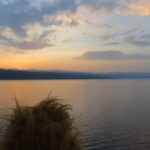
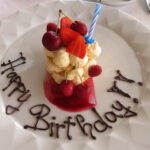

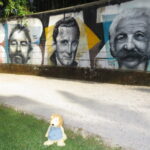

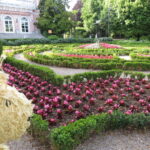
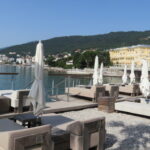
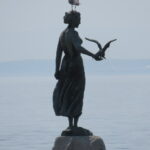
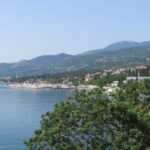
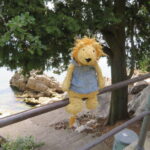
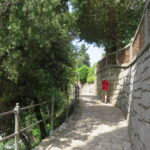
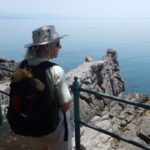
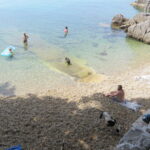
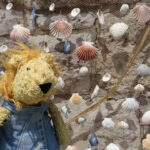
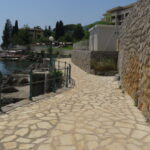



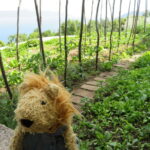
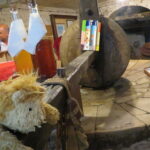
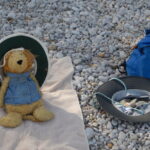
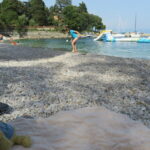
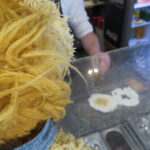
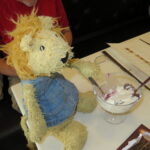
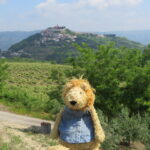
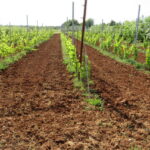
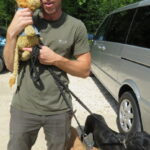
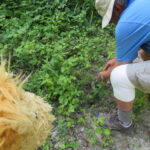
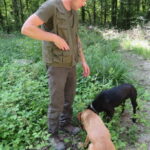
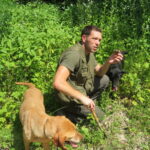
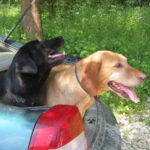

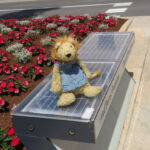
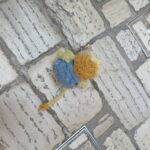
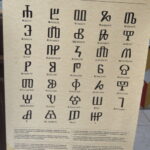
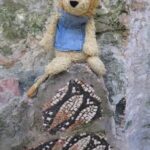

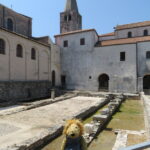
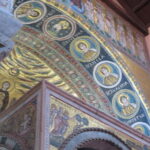

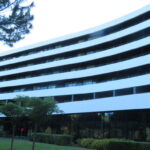
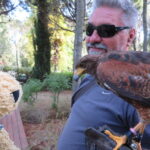
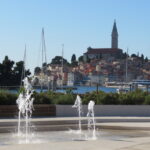
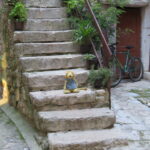
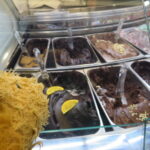
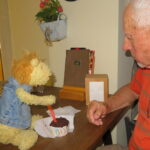
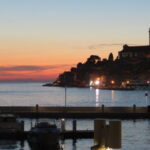
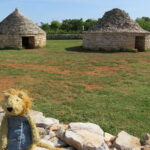

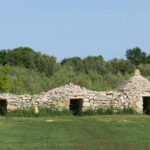
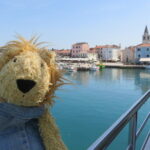

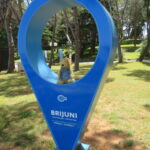
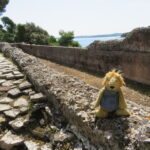


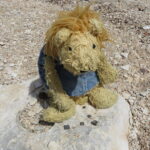
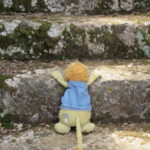
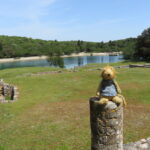
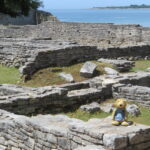

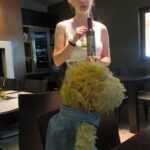
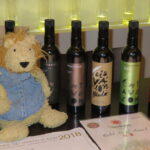
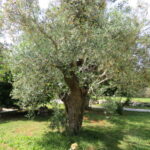
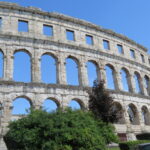
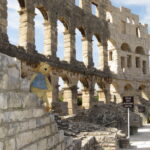
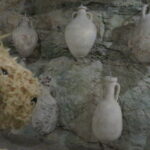
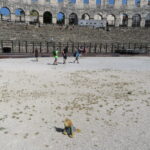
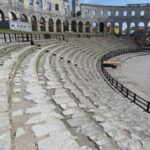

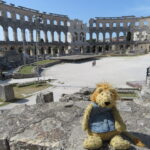
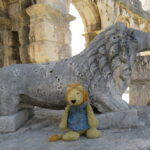
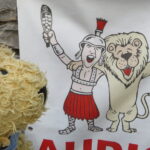
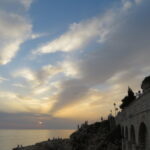
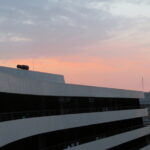
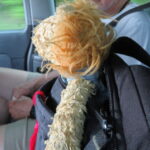

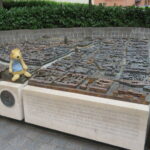
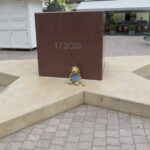
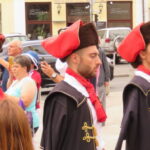
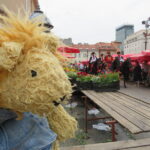

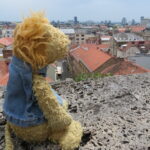

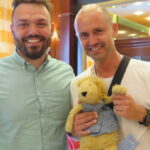
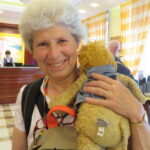
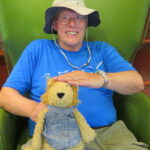
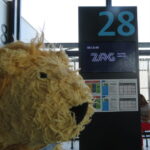
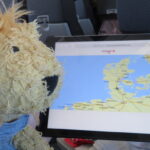
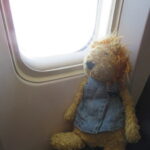
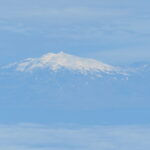
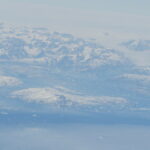
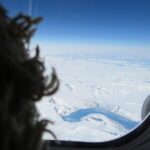
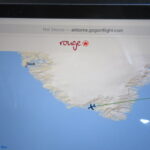
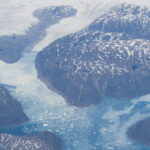
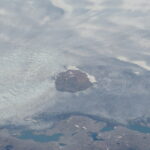
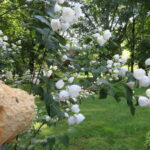
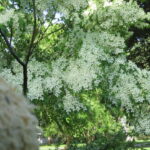
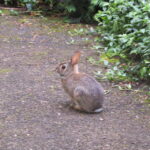
We thought you looked quite graceful dancing with Isadora but we liked the gardens better. We were glad Grandma got to swim in the Adriatic Sea. We thought the basilica was pretty as was the old city of Rovinj. We were glad you celebrated Grandpa’s birthday with gelato. Georgia-san looked quite young.
cont. The changing of the guard was neat and the story of the cravat was great. St. Marks church in the city of Zagreb had a very colorful roof. We are glad that you saw Greenland too. Those were good pictures also.